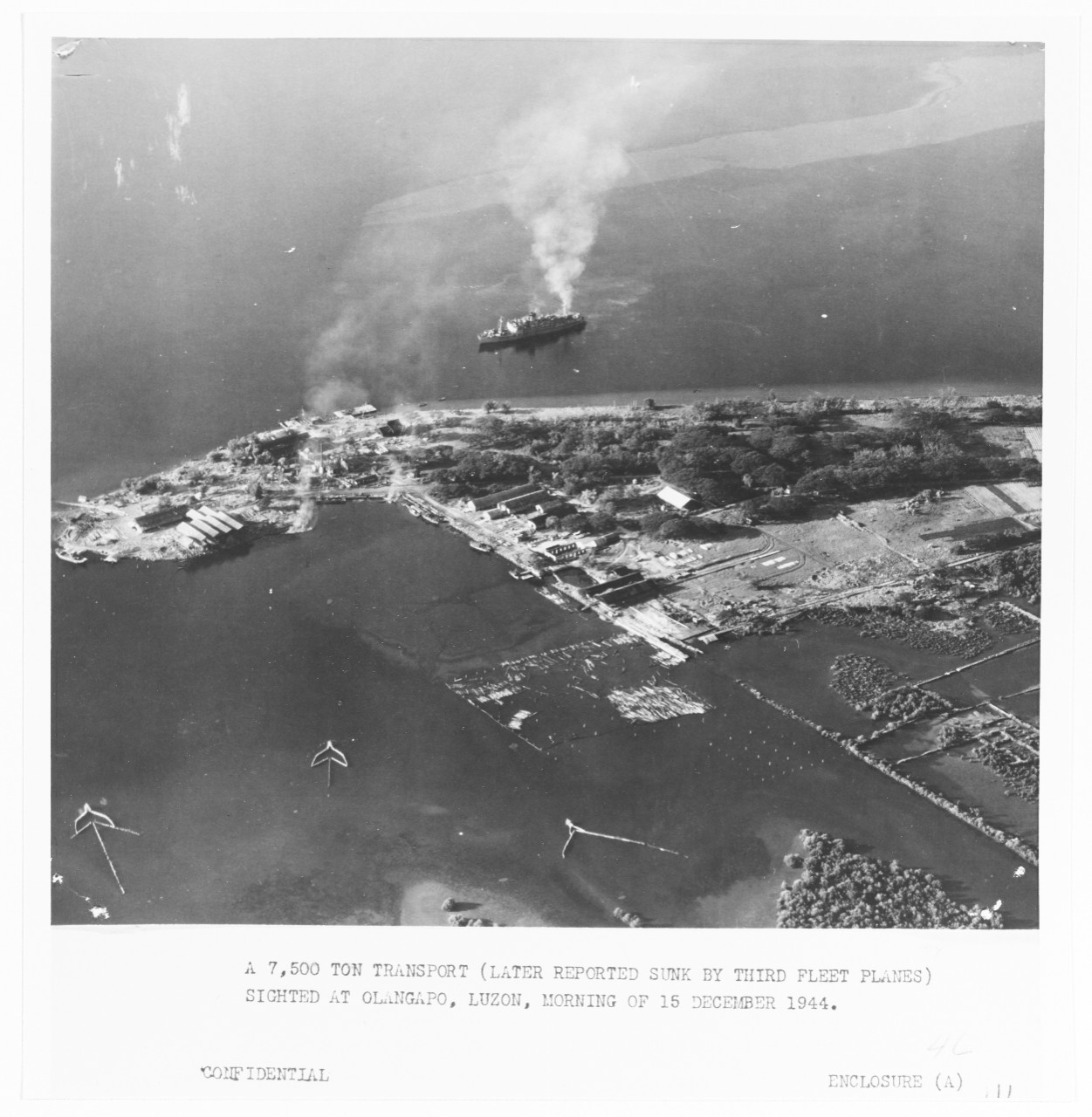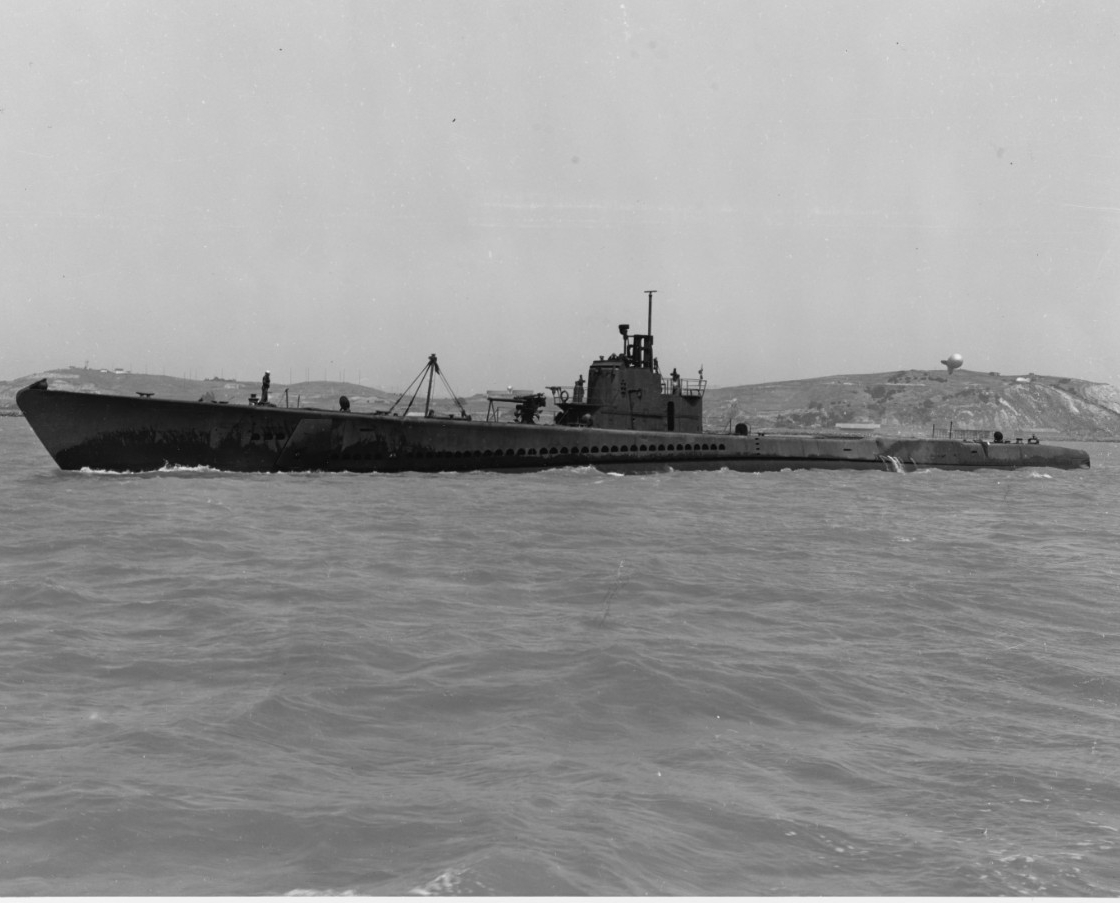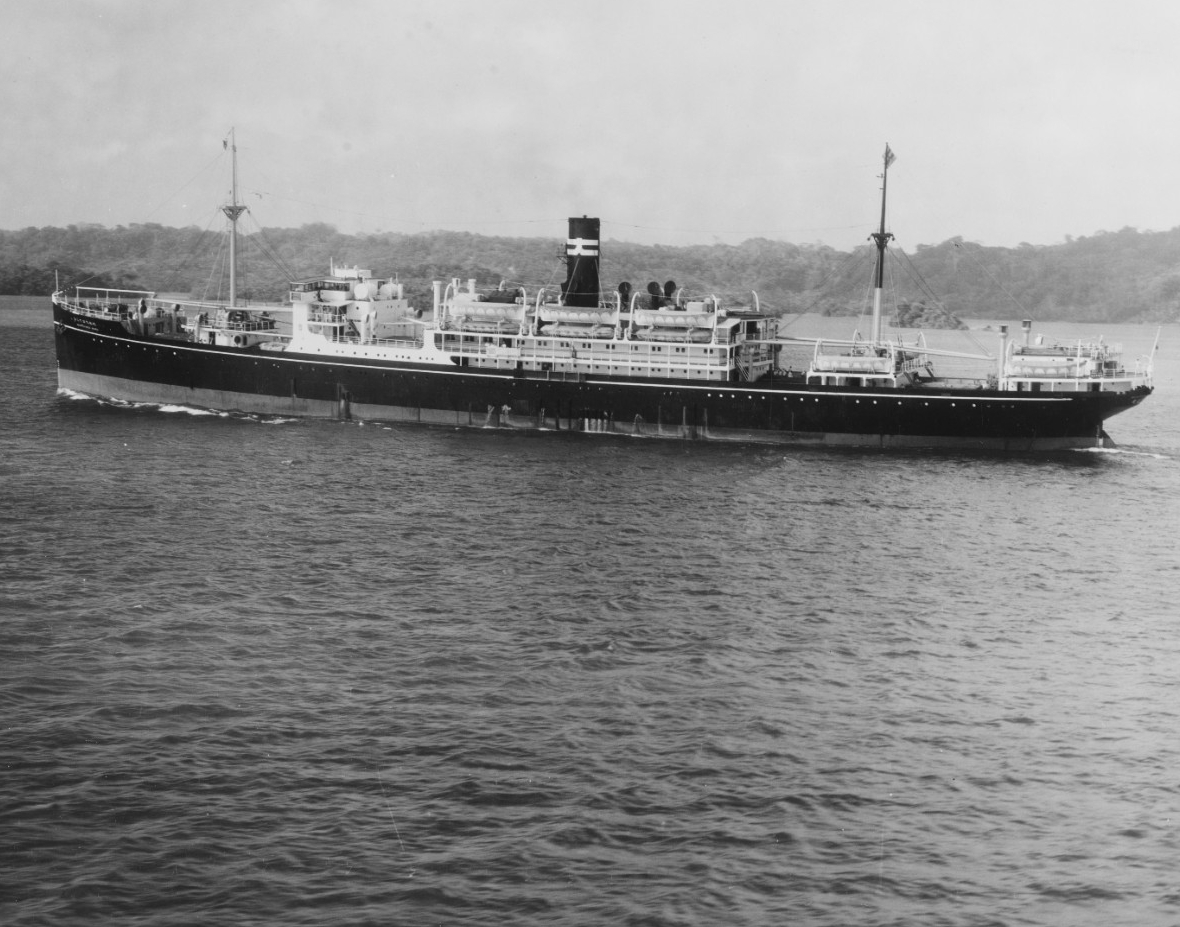The Japanese “Hell Ships” of World War II
Allied prisoners of war called them “hell ships,” the requisitioned merchant vessels that the Japanese navy overloaded with POWs being relocated to internment on the Japanese Home Islands or elsewhere in the empire. The holds were floating dungeons, where inmates were denied air, space, light, bathroom facilities, and adequate food and water—especially water. Thirst and heat claimed many lives in the end, as did summary executions and beatings, yet the vast majority of deaths came as a result of so-called “friendly fire” from U.S. and Allied naval ships, submarines, and aircraft.[1]
In his comprehensive study of the sources, historian Gregory F. Michno shows that by the end of the war, 134 Japanese hell ships had together embarked on more than 156 voyages, which carried an estimated 126,000 Allied prisoners of war.[2]
Approximately 1,540 Allied POW deaths resulted from conditions in the holds and violence aboard hell ships, whereas more than 19,000 deaths came as a consequence of Allied attacks.[3] The U.S. Navy carried out most of these attacks but with the help of Allied intelligence services and the Royal Navy’s Far East patrols. On 18 September 1944, for example, a British submarine torpedoed and sank the Japanese hell ship Junyo Maru. Nearly 6,000 people died: 4,120 Javanese laborers and 1,520 Allied POWs.[4]
The Empire of Japan required great numbers of workers—often enslaved or coerced—and huge quantities of oil and other raw materials in order to wage war against the Allies, particularly the resource-rich United States. Japanese hell ships therefore became integral to the massive effort to keep the war machine running. They plied the waters with the necessary cargoes, which the Japanese extracted from subject populations in occupied areas. As Japanese forces picked up more and more Allied prisoners of war between 1942 and 1944, the cargo-laden vessels doubled as prisoner transports, obscuring any last distinction between ships that should be attacked and ships that should be spared.
In the process of sinking these vessels, the U.S. Navy and the Allies effectively drowned many of their own men, who were trapped and concealed in the holds. These men and the other Allied POWs below decks were not, of course, the Allies’ target. The targets were the vessels as such and the people and supplies on board that were necessary to the continuation of the Japanese war effort.
Attacking Japan’s Requisitioned Merchant Ships
Montevideo Maru became the first of the hell ships to be sunk by the U.S. Navy, on 1 July 1942. Lieutenant Commander William L. Wright’s submarine, Sturgeon (SS-187), had been in pursuit of its target for several hours before finally launching a torpedo attack in the small hours of the morning.
Within minutes of the first explosion, Montevideo Maru sank by the stern. There had not even been time to pump the holds or lower more than a few of the lifeboats. More than 1,000 Australian troops and 200 Australian administrative personnel, captured by the Japanese from New Guinea, the Bismarck Archipelago, and the Solomon Islands, went down with the ship.[5]
Intercepted radio transmissions were the Allies’ most important source of information about Japan’s requisitioned merchant ships. The commanders of these ships sent two daily communications to the Japanese military’s general headquarters, and these communications would have included POW counts.[6]
In order to intercept, decode, and act on these transmissions, the Allies established the Joint Intelligence Center Pacific Ocean Area (JICPOA) in September 1943.[7] Allied intelligence units in Australia and elsewhere in the region monitored Japanese and other Axis radio traffic and relied on the decryption and translation skills of women and men at intelligence facilities in Bletchley Park, England; Delhi, India; and Colombo, Ceylon (present-day Sri Lanka).[8] Their work done, the intercepted messages now constituted actionable intelligence.
This actionable intelligence was then edited down for use in Ultras, short for “ultrasecret” communiqués going out to theater commanders. Next, those theater commanders would read the Ultras and decide which information to release to Allied ship commanders. In the end, the ship commanders received the bare minimum: ship name, location, destination, approximate size, and defenses. Somewhere along the chain, between the deciphering of the intercept and the transmission of information to ship commanders, details about POWs were excised. Individual ship commanders would not have known that their targets contained Allied POWs or even Japanese civilians.[9]
In the last years of the war, moreover, the efforts to sink Japan’s requisitioned merchant ships intensified. In early 1944, intelligence workers’ efforts registered an increase in radio traffic around the Philippines and therefore intercepted more messages more frequently. In the first two months of that year, according to archivist Lee Gladwin, analysts and their assistants generated more than 3,700 index cards as a means of organizing information about Japan’s busy fleet of requisitioned merchant vessels.[10]
By fall 1944, the radio traffic had reached a frenzy. The Battle of Leyte Gulf (October 1944), which signaled the start of the American reconquest of the Philippines, prompted the Japanese to move resources and people—including POWs—to the Japanese Home Islands.
Toward the end of 1944, as the Americans took more and more territory in the Philippines, they effectively flushed out tens of thousands of Allied POWs. In the mad rush to evacuate, the Japanese massively overloaded their requisitioned merchant vessels with supplies and people. Conditions deteriorated quickly. Civilians and military personnel crowded the vessels’ superstructures and upper decks; Allied POWs languished in abject wretchedness below.
In haste, the requisitioned merchant vessels steamed north, trying to outrun the U.S. Navy, but Navy officers, armed with the latest intelligence, had the decisive advantage. The hell ships in particular, which were poorly defended and heavily laden, succumbed in great numbers.[11]
Perhaps the best documented sinking, from the perspective of the American victims, is that of Oryoku Maru, which set off from Manila, in the Japanese-occupied Philippines, on 13 December 1944. The sinking of Oryoku Maru is exceptional, therefore, not because the experience of its prisoners was unique per se, but because their experience is so well documented in testimony collected after the war.
Oryoku Maru had been built as a luxury liner just before the war but was requisitioned for its new purpose shortly thereafter. Now, down in the holds, at least 1,600 Allied POWs awaited departure. Conditions were deplorable. Lieutenant Colonel O. O. Wilson, USA, in the after hold, later explained how so many hundreds of men occupied so little space:
The hold was about 25 to 30 feet from the main deck [and] reach[able] by a steep ladder which one man could descend at a time. Bays in double tiers were built around the hold, these bays being about 7 feet by 8 feet. Twenty men were jammed into each upper and lower bay. The only way possible of crowding that number into such a small compartment was to have each man sit jammed into the crotch of the man behind him in four rows with five men to a row. When all the bays had been filled in this fashion, all remaining space in the hold was filled by men in a standing position packed one against the other, cutting off all air for men in the bay . . . . It soon became evident to all that men would die very quickly from heat exhaustion and suffocation. The heat was terrific and the air stifling; men were bathed in sweat immediately and began to pass out from suffocation and dehydration.[12]
Most of the POWs who boarded Oryoku Maru on 13 December 1944 had been in custody since the Bataan campaign of 1942 and had survived some of the war’s most notorious death marches.[13] They were now exceedingly weak and malnourished.
The following morning, 14 December, the pilots of U.S. Navy planes from Hornet (CV-12) caught sight of Oryoku Maru and its convoy off the east coast of Luzon. By 8 a.m., Hornet’s dive-bombers were on the offensive.[14] They returned two hours later to continue the attack. Separately, aircraft from Cabot (CVL-28), which was also covering operations off Luzon, also attacked the ship.[15] According to an eyewitness account on board, it was at this point that Oryoku Maru’s escort ships fled the scene and left the liner to its fate.[16]
Prisoners in the after hold descended into panic. Several tried to climb ladders to the deck but to no avail. The Japanese guards fired indiscriminately down into the darkness, driving the men away from the hatch.
Hornet’s bombers returned every 30 minutes or so and then zeroed in for a massive attack in the late afternoon. Japanese gunners continued to defend Oryoku Maru, not least of all to save their own lives, but also because the ship was loaded with as many as 2,000 Japanese civilians in hasty flight from the American advance through the Philippines. The screams of Japanese children were audible to POWs below decks, whose heads and shoulders became wet with the trickles of blood coursing down from the superstructure.[17]
Yet the damage, which included the splintering of the decks, had also introduced air and light into a few areas of the holds. These came as a relief to many POWs once the attacks were over for the night.[18]
For others, however, the second night of the voyage was even worse than the first. Historian John Toland describes in lurid detail the scene in the forward hold:
There were shouts of “Quiet!” and “At ease!” but as the temperature reached 110 degrees, riot again erupted. . . . Men were going mad. They collided with one another in the dark, slipping and falling in the feces; the sick were trampled; wild, deadly fights erupted. Men dropped to their knees . . . to lap up sewage running in open drains.[19]
Meanwhile, the Japanese passengers who had survived the aerial bombardment were boarding launches and heading for the Philippine beaches nearby.[20]
At dawn on the 15th, as a handful of POWs housed amidships were in the process of escaping the stricken liner, Hornet’s planes returned. A series of direct hits caused the bow to flood, and the ship took on a serious list.
More aircraft arrived overhead from both Hornet and Cabot. They strafed the deck and dropped 500-pound bombs and multiple rockets that nearly tore the ship apart. Girders buckled; fires engulfed the upper decks. As POWs, bloodied and terrorized, clamored up the hatches from the holds, Japanese sentries shot them dead. Yet the men kept coming, forced out of the holds and into the fires by rising water. Eventually, the chaos, the strafing, and the fires became too much for the Japanese jailors, who abandoned ship.[21]
Left to their own devices, more than a thousand POWs ended up in the water and swam toward land. The Japanese captured them in the water and on the shore—it is unclear whether anyone actually escaped. The guards then herded their pitiful charges to a tennis court on shore for the next stage of their deadly ordeal.[22]
In sobering detail, historian Edward J. Marolda has traced the fates of the group of men who survived the sinking of Oryoku Maru. Most of them were loaded onto another requisitioned merchant ship, which subsequently sank off the coast of Taiwan. The survivors of that sinking went on to Japan to contend with “starvation, disease, and exposure to the elements.” Of the 1,600-plus men who had embarked on Oryoku Maru on 13 December 1944, some 1,000 never made it to Japan.
Those who did make it to Japan were subject to further abuses and neglect as well as another hellish trip at sea, this time to Korea, where, at the end of the war, U.S. authorities could find only 128 of Oryoku Maru’s POW survivors, a mere eight percent of the total number of POWs on board when the ship had departed the Philippines en route to Japan in December 1944.
Japanese treatment of Allied POWs was deadly in and of itself, Allied sinkings of hell ships notwithstanding. Even in a case like that of Oryoku Maru, with so many survivors, a prisoner’s chances of making it to the end of the war were slim.
The sinking of Oryoku Maru was the result of intercepted Japanese radio transmissions that would have revealed some information about POWs on board. Whether that information made its way down to the theater commanders is unclear. At any rate, there is no evidence to suggest that commanders at sea had any knowledge of the presence of POWs on Japanese ships.[23]
The issue of culpability is complicated and disquieting. As yet, no historian has taken it on directly. Gregory Michno, who has done more than anyone to uncover and make sense of the history of hell ships, offers a most sobering explanation: “War is hell, and hell is relative. The fatal Ultras were sent. Axis and Allies died together.”[24]
—Adam Bisno, Ph.D., NHHC Communication and Outreach Division, November 2019
Hell Ships Sunk by Allied Forces, 1942–1945
Date Sunk |
|
Montevideo Maru |
1 July 1942 |
Lisbon Maru |
1 October 1942 |
Nichimei Maru |
15 January 1943 |
Suez Maru |
29 November 1943 |
Ikoma Maru |
21 January 1944 |
Tango Maru |
25 February 1944 |
Tamahoko Maru |
24 June 1944 |
Harugiku Maru |
25 June 1944 |
Koshu Maru |
4 August 1944 |
Shinyo Maru |
7 September 1944 |
Kachidoki Maru |
12 September 1944 |
Rakuyo Maru |
12 September 1944 |
Junyo Maru |
18 September 1944 |
Hofuku Maru |
21 September 1944 |
Arisan Maru |
24 October 1944 |
Oryoku Maru |
15 December 1944 |
Enoura Maru |
9 January 1945 |
Source: Gregory F. Michno, Death on the Hell Ships: Prisoners at Sea in the Pacific War (Annapolis, MD: Naval Institute Press, 2001), 153–54 and 259. Note: There is considerable disagreement among historians on the number of hell ships and the number of sinkings.
__________________________
[1] Gregory F. Michno, Death on the Hellships: Prisoners at Sea in the Pacific War (Annapolis, MD: Naval Institute Press, 2001), 292.
[2] Lee A. Gladwin, “American POWs on Japanese Ships Take a Voyage into Hell,” Prologue 35 (Wintero, 2003), available at www.archives.gov/publications/prologue/2003/winter/hell-ships-1.html.
[3] Michno, Death on the Hellships, 292.
[4] Ibid., 316.
[5] Ibid., 27–29.
[6] Ibid., 140.
[7] Ibid., 139.
[8] Gladwin (op. cit.).
[9] Michno, Death on the Hell Ships, 295.
[10] Gladwin (op. cit.).
[11] Ibid.
[12] Account of Lt. Col. O. O. Wilson, “Trip to Japan,” Darnell W. Kadolph Papers, COLL/689, box 1, folder 3, Naval History and Heritage Command, Washington, DC.
[13] Ibid.
[14] Betty B. Jones, The December Ship: A Story of Lt. Col. Arden R. Boellner’s Capture in the Philippines, Imprisonment, and Death on a World War II Japanese Hell Ship (Jefferson, NC: McFarland, 1992), 102.
[15] David Britt, Relentless Hope: A True Story of War and Survival (Pennsauken, NJ: BookBaby, 2021), 104–7.
[16] Ibid.
[17] Ibid., 103.
[18] Ibid.
[19] John Toland, The Rising Sun: The Decline and Fall of the Japanese Empire (New York: Random House, 1970), 601.
[20] Jones, December Ship, 103.
[21] Ibid., 105–6.
[22] Toland, Rising Sun, 602.
[23] Cf. Edward J. Marolda, Ready Seapower: A History of the U.S. Seventh Fleet (Washington, DC: Naval History and Heritage Command, 2012), 14.
[24] Michno, Death on the Hellships, 296.





